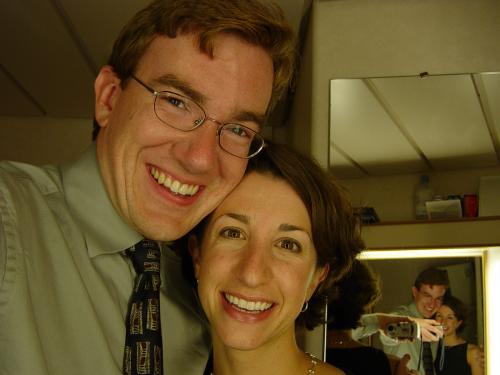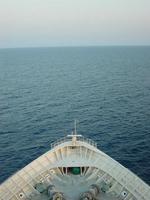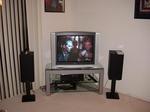Star Trek, The Dynamic Society
Andrew Sincic recently extolled the virtues of “Star Trek: The Next Generation”, as portrayed on the season 5 DVD. As a science-fiction fan, I’ve always enjoyed the show for its clever stories and interesting special effects. But Andrew alluded to something else in Star Trek that has always appealed to me, too: It portrays an open, dynamic society in which the amazing opportunities of the universe are explored. This is an important and encouraging vision in today’s world.
The openness of the Star Trek society can be seen in several ways. The most apparent is the inclusiveness of the Federation of Planets: It seems like any species can join, as long as they are willing to work within the governing framework. Many species are represented within the Starfleet, which implies that racial differences are irrelevant to the job of exploring. Even artificial creatures, such as the android Data, participate with their own unique talents. Subtler, the Star Trek society encourages innovation and risk taking. Why risk the dangers in the darkness of space, if not for the potential of transforming one’s life? The inventors and scientists are clearly respected and honored, and learning in general is encouraged. I get the impression of hope and boundless expectation, that every day is better than the previous.
Star Trek is often compared to its peer, Star Wars. Consider the general world-view of Star Wars: The past is often regarded as superior than the present or future, with previous governmental organizations (e.g. “the old republic”) wistfully remembered. Authoritative figures are often in their place due to the vagaries of birth. (Consider that Luke Skywalker’s parentage is the key reason that he is special.) Technologists are portrayed, not as heroes, but at best the maintainers of the warriors’ equipment, and at worst, grubby rat-like hoarders that can barely communicate (such as the Jawas). The general impression is that the people of the Star Wars milieu happened to stumble into the machines of their vanished betters, and have neither the will nor the ability to move forward. (This impression is probably intentional, to better serve its story.)
Thus, we can see contrasting visions of society in popular culture: the dynamic society of Star Trek (science-loving, progress-orientated, and risk taking), and the static society of Star Wars (with its ambivalence towards science, yearning for past glories, and concern about lineage).
It does not appear that either vision fits the traditional dichotomy of “right / left” or “liberal / conservative”. Maybe that particular dichotomy isn’t relevant anymore, now that socialism is dead as an ideology. (Let me poke its body with a stick, just to make sure. The 20th century was socialism’s chance, and it is not surprising that it was also the bloodiest century.) Virginia Postrel, the editor of Reason Magazine, argued such a hypothesis in her essay After Socialism. Now that nobody seriously argues for a “fairer distribution of wealth” (as the socialists argued), traditional political lines are blurred. The new opponents of freedom talk about “stability” and curbing the dynamism of markets. A right-wing commentator might join a left-wing critic in decrying the evils of international trade, due to the changes it brings in expanding and contracting industries. Conversely, a liberal might join with conservative colleagues to start a new business, to demonstrate the virtues of creativity and choice.
A dynamic society, by definition, changes. This can be frightening to some, as displacements can be hard to predict. People will almost certainly make different choices than those expounded by a central planner. Some of those choices may even turn out right, though, and there is evidence that dynamism works. Dinesh D’Souza argued that the West grew rich because of our embrace of science, capitalism, and democracy (core tenants of the dynamic society). Advances in complexity theory, ecological science, and organizational theory indicate that self-organizing systems can often be more stable than more rigid structures.
So, let us draw encouragement from depictions of a risk-taking, science-loving society. The universe is an adventure, and a dynamic society enables us to play in it.





















 Several weekends ago, my girlfriend and I went swimming
at
Several weekends ago, my girlfriend and I went swimming
at 


